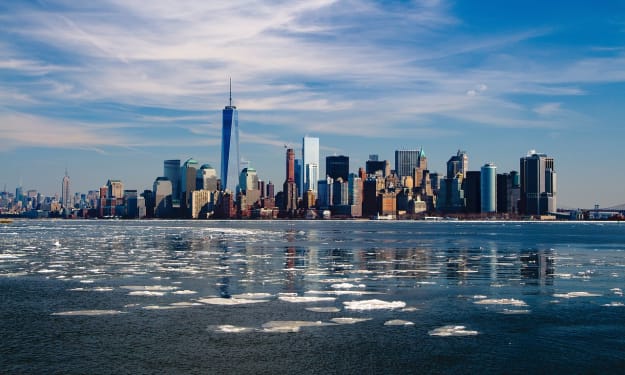Nature's Wrath: Countries Battling Dangerous Natural Disasters
Nature's Wrath
The anger of nature | Accounts of nations battling with risky cataclysmic events
Introduction:
Nature's incredible power can both awe and terrify, as countries around the world grapple with the relentless force of dangerous natural disasters. From earthquakes to hurricanes, tsunamis to wildfires, some nations find themselves particularly vulnerable to these cataclysmic events. In this article, we explore the countries that have faced the brunt of Mother Nature's fury, navigating through the treacherous landscapes of disaster-prone regions.
1. Japan - Earthquakes and Tsunamis:
Arranged on the Pacific Ring of Fire, Japan is no more odd to seismic movement. The country experiences frequent earthquakes, some of which have been devastating. The 2011 Tōhoku earthquake and the subsequent tsunami, for instance, left a lasting impact on the nation. The earthquake, with a magnitude of 9.0, triggered a colossal tsunami that struck the northeastern coast of Japan, causing widespread destruction and leaving thousands dead or missing.
Japan has since invested heavily in earthquake-resistant infrastructure and early warning systems, demonstrating resilience in the face of these natural hazards.
2. The Philippines - Typhoons and Flooding:
Nestled in the western Pacific, the Philippines endures an annual onslaught of typhoons, making it one of the most disaster-prone countries in the world. Typhoon Haiyan in 2013 was a particularly harrowing experience, with wind speeds reaching 195 mph. The storm resulted in massive storm surges and widespread flooding, leaving millions displaced and causing extensive damage to infrastructure.
The Philippines has been actively working on disaster preparedness and response measures, including the construction of resilient buildings and the establishment of evacuation centers.
3. Haiti - Earthquakes and Hurricanes:
Haiti, located on the island of Hispaniola, faces a unique combination of seismic and meteorological challenges. The 2010 earthquake, with a magnitude of 7.0, wreaked havoc on the impoverished nation, claiming hundreds of thousands of lives and leaving countless others homeless. Subsequently, Haiti has been vulnerable to hurricanes, such as Hurricane Matthew in 2016, which exacerbated existing vulnerabilities.
International aid and reconstruction efforts continue to support Haiti in rebuilding its infrastructure and enhancing disaster resilience.
4. Indonesia - Volcanic Eruptions and Tsunamis:
Indonesia, the world's largest archipelago, is home to numerous active volcanoes and is situated on the Pacific Ring of Fire. The 2004 Indian Ocean earthquake and tsunami, which originated off the coast of Sumatra, remains one of the deadliest natural disasters in recorded history. The country has also faced the challenges of volcanic eruptions, such as the eruption of Mount Merapi in 2010.
Indonesia has implemented early warning systems and evacuation plans, recognizing the need for preparedness in the face of these dual threats.
5. United States - Hurricanes and Wildfires:
The United States experiences a wide range of natural disasters, with hurricanes striking the Atlantic and Gulf coasts and wildfires scorching the western states. Hurricanes Katrina (2005) and Sandy (2012) showcased the devastating impact of these storms, causing extensive flooding and destruction. Meanwhile, the western states, particularly California, have battled increasingly severe wildfires fueled by dry conditions and high winds.
The U.S. continues to invest in disaster management, firefighting resources, and climate change mitigation to address the growing threat of these natural disasters.
Conclusion:
As climate change intensifies and natural disasters become more frequent and severe, countries worldwide face the daunting challenge of adapting to this new reality. While some nations are more susceptible to specific types of disasters due to their geographical location, all must work towards comprehensive preparedness, resilient infrastructure, and international collaboration to mitigate the impact of these dangerous natural phenomena. The lessons learned from past disasters serve as invaluable guides as humanity collectively strives to build a more resilient and adaptive future in the face of nature's formidable forces.
Japan, fortified by earthquake-resistant structures, remains vigilant against seismic threats. The Philippines focuses on disaster preparedness amid recurring typhoons. Haiti continues post-earthquake reconstruction efforts, aided by international support. Indonesia bolsters early warning systems against volcanic eruptions and tsunamis. The United States enhances wildfire management and climate change mitigation strategies. Ongoing resilience efforts underscore the global commitment to confronting nature's challenges.
About the Creator
Enjoyed the story? Support the Creator.
Subscribe for free to receive all their stories in your feed. You could also pledge your support or give them a one-off tip, letting them know you appreciate their work.







Comments (1)
well-written and informative.